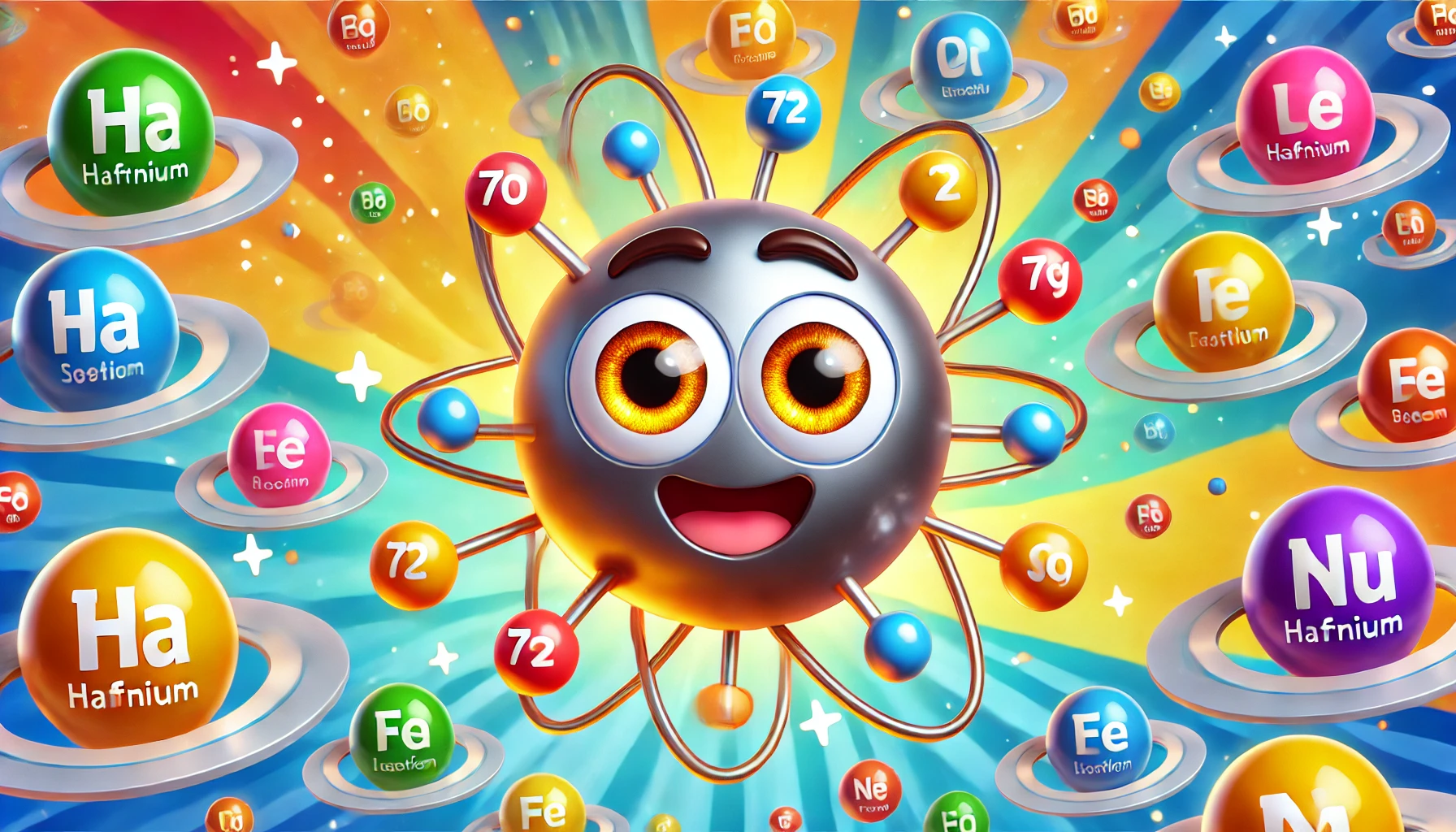Understanding Hafnium: Properties, Uses, Health Risks, and Fascinating Facts
Understanding Hafnium: Properties, Uses, Health Risks, and Fascinating Facts
Table of Contents
- Introduction to Hafnium
- Properties of Hafnium
- Uses of Hafnium
- Health Risks of Hafnium Exposure
- Interesting Facts about Hafnium
- Environmental Impact of Hafnium
- Conclusion
- References
Understanding Hafnium: Properties, Uses, Health Risks, and Fascinating Facts
Introduction to Hafnium Hafnium is a chemical element with the symbol Hf and atomic number 72. It is a transition metal known for its high melting point, corrosion resistance, and numerous industrial applications. This article explores the properties, uses, health risks, and interesting facts associated with hafnium, providing a comprehensive understanding of this valuable element.
Properties of Hafnium Hafnium is characterized by several distinct physical and chemical properties.
Physical Properties
- Appearance: Hafnium is a silvery-gray, lustrous metal.
- Density: The density of hafnium is 13.31 g/cm³.
- Melting Point: Hafnium has a high melting point of 2,233°C (4,051°F).
- Boiling Point: The boiling point of hafnium is 4,603°C (8,317°F).
Chemical Properties
- Reactivity: Hafnium is resistant to corrosion and does not react with alkalis or acids under normal conditions. It reacts with halogens and forms a protective oxide layer.
- Compounds: Hafnium forms various compounds, such as hafnium dioxide (HfO₂), hafnium tetrachloride (HfCl₄), and hafnium carbide (HfC).
Uses of Hafnium Hafnium has numerous applications across different industries due to its unique properties.
Nuclear Reactors
- Control Rods: Hafnium is used in nuclear reactors due to its excellent neutron-absorbing properties, making it an ideal material for control rods that regulate the fission process.
Electronics and Semiconductors
- Microprocessors: Hafnium oxide is used as an insulator in microprocessors and other semiconductor devices to improve their efficiency and performance.
- Capacitors: Hafnium-based materials are used in capacitors to enhance their electrical properties.
Aerospace and Industrial Applications
- Superalloys: Hafnium is used in superalloys that require high strength and resistance to extreme temperatures, such as those used in jet engines and gas turbines.
- Plasma Cutting: Hafnium is used in plasma cutting electrodes due to its ability to withstand high temperatures and electrical conductivity.
Optical Coatings
- Coating Materials: Hafnium oxide is used in optical coatings for lenses and mirrors to improve their durability and performance.
Health Risks of Hafnium Exposure Hafnium is generally considered to have low toxicity, but there are some health risks associated with exposure to hafnium compounds and dust.
Inhalation and Ingestion
- Respiratory Irritation: Inhalation of hafnium dust can cause respiratory irritation, coughing, and shortness of breath.
- Gastrointestinal Issues: Ingestion of hafnium compounds can cause gastrointestinal irritation, including nausea and vomiting.
Skin and Eye Contact
- Skin Irritation: Direct contact with hafnium compounds can cause skin irritation and dermatitis.
- Eye Irritation: Exposure to hafnium dust or solutions can cause eye irritation and potential damage.
Chronic Exposure
- Lung Effects: Prolonged exposure to hafnium dust may lead to lung damage and other respiratory issues.
Interesting Facts about Hafnium Hafnium has several intriguing aspects that make it an interesting element.
Discovery
- Discovered in 1923: Hafnium was discovered by the Danish chemist Dirk Coster and Hungarian chemist George de Hevesy in 1923. The element was named after “Hafnia,” the Latin name for Copenhagen.
Unique Properties
- High Melting Point: Hafnium has one of the highest melting points among metals, making it suitable for high-temperature applications.
- Similar to Zirconium: Hafnium is chemically similar to zirconium, and they are often found together in mineral deposits.
Isotopes
- Stable Isotopes: Hafnium has six naturally occurring stable isotopes, with hafnium-180 being the most abundant.
- Radioactive Isotopes: Hafnium-182 and hafnium-178 are among its radioactive isotopes, used in scientific research.
Environmental Impact of Hafnium Hafnium is not known to have significant environmental impacts, but its extraction and use should still be managed responsibly.
Natural Occurrence
- Abundance: Hafnium is relatively scarce in the Earth’s crust and is typically found in minerals such as zircon and baddeleyite.
- Mining: Extraction of hafnium from these minerals must be done with care to avoid environmental damage.
Industrial Waste
- Waste Management: Proper disposal of hafnium-containing industrial waste is crucial to prevent environmental contamination.
Conclusion Understanding hafnium, its properties, uses, health risks, and interesting facts provides valuable insight into this versatile element. While hafnium is generally safe with low toxicity, appropriate safety measures should be taken when handling hafnium compounds and dust. Its applications in nuclear reactors, electronics, aerospace, and optics highlight its importance in modern technology and industry.

<ⓒ WizardMedics (wizardmedics.com)>






